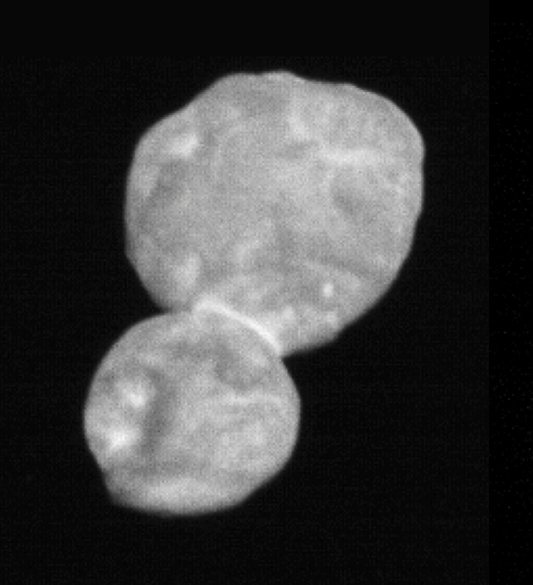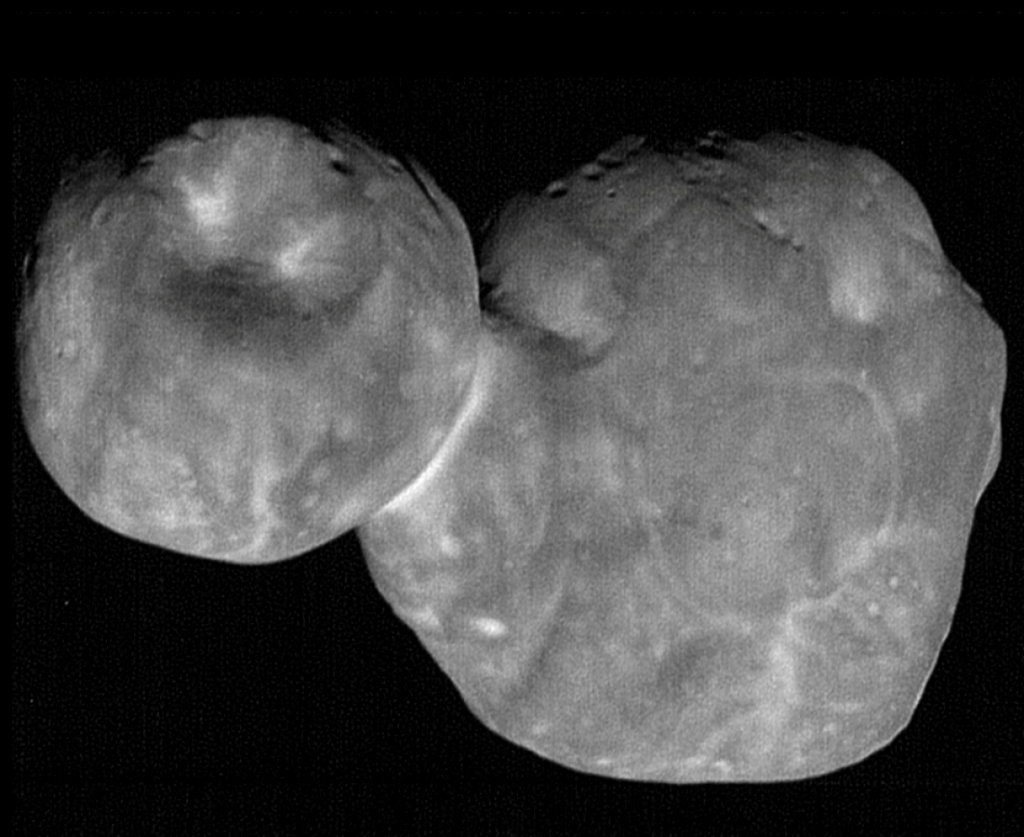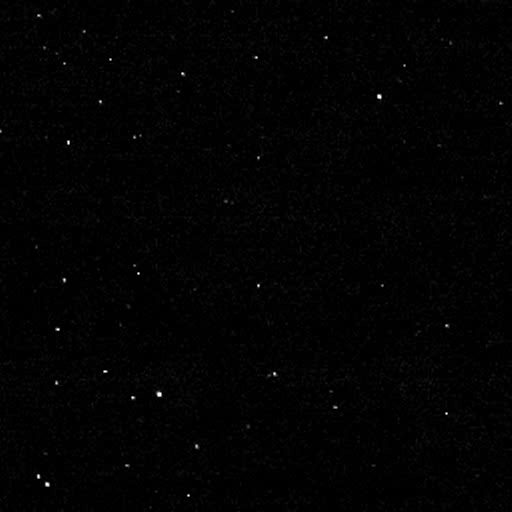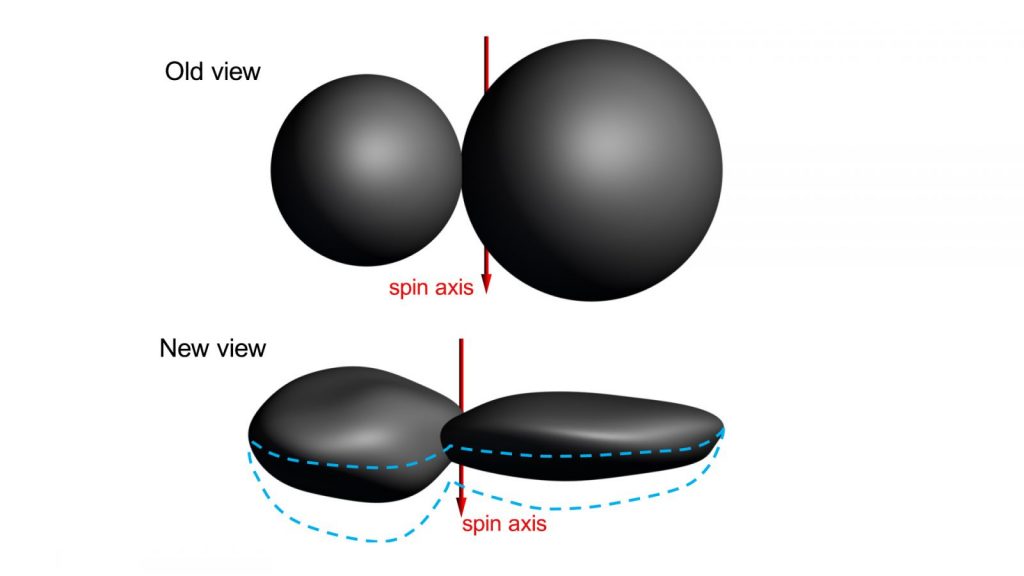NASA’s New Horizon’s team released a

What’s interesting about Ultima Thule is it’s actually two joined bodies. One body is called Ultima and the other Thule. So now let’s look at the updated version.

Why I am excited about this particular story is first it gives you a sense of how long it takes to get data back from this spacecraft and produce a high resolution image. Mind you, the data is traveling at the speed of light and still takes 6 hours to send data or receive data. That means if you wanted to make a request right now to get data that it would take 6 hours for the spacecraft to get it and then another 6 hours to receive the data. Doesn’t leave much patience for any errors.

Now that we have this high resolution of Ultima Thule what did scientists notice? Well for one, they noticed circular patches of terrain. Next they notice many small dark pits near the “terminator” or the boundary between the dark parts of the body and the sunlit areas.

What questions come to your mind now that you know what scientists notice? Well, it might be tough for some people as it may sound less exciting than diamonds raining on exo-planets. However, some questions you may as are what caused these circular spots and dark pits? Was it caused by sublimation, impactors, or something else?
Lastly, what we thought Ultima Thule looked like was a snowman shape object. Nevertheless, data and science showed us what it really is! Check it out below:

Instead of two spheres barely connected, it turns out that it’s more like a pancake and an altered walnut! Mind you this is the difference of what we thought on Jan 1st compared to what this new data showed in Feb.
This is just the beginning of what we’re beginning to scratch the surface of Kuiper Belt objects. It’ll take about 20 months to get all of the data transmitted back to Earth. It will also teach us about what the solar system is like in the outer edges and more about where we came from. Huge congrats to the New Horizons team. I can’t wait to see what else comes down the pipe.
Sources:
- New Horizons site: http://pluto.jhuapl.edu
- Phys.org – https://phys.org/news/2019-02-horizons-spacecraft-sharpest-views-ultima.html
